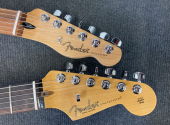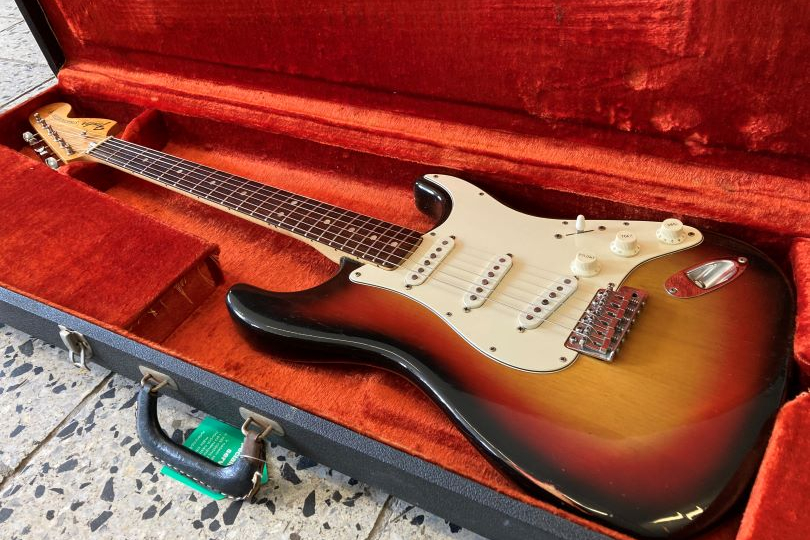
Under the Hood #20: Fender and the CBS Era
Throughout its history, the Fender brand has gone through several stages. Regardless of the quality of the products made in a given era, all of these stages are important. The golden era of Fender lasted from its founding until 1965 when the brand was purchased by CBS. Then in 1984, Fender was bought out by a group of investors and former employees who brought the brand back to the top. In this episode, I'd like to focus on the CBS era when many changes in production took place and the quality of the instruments declined significantly. However, this infamous phase allowed Fender to subsequently rise and become a true legend.
In previous episodes, I briefly described the history and evolution of the Fender brand and shared excerpts from interviews with people who played key roles in the company's story. Among guitar collectors or casual players, there's still debate about which instruments were the best, which era meant what and so on. I'd like to throw in a few interesting facts and also my own observations based on my experience as a guitar technician and enthusiast of older guitars.
The golden era of Leo Fender
The golden era of Fender lasted until 1965 when Leo Fender sold the company to CBS. He first offered to sell to Don Randall for 1.5 million dollars. However, the latter was not interested and did not have the money. But he offered to find a third party interested in buying the company.
Thus, in the above-mentioned year 1965, specifically on January 5, Fender was acquired by CBS for 13 million dollars. By this time, things were slowly beginning to change at Fender. Some for the better and some, unfortunately, for the worse. From the point of view of the era, the intention was good—Fender wanted to get closer to a broader range of musicians. However, this was redeemed by mass production where time and cost play an important role. Both have to be reduced which logically leads to a reduction in quality.
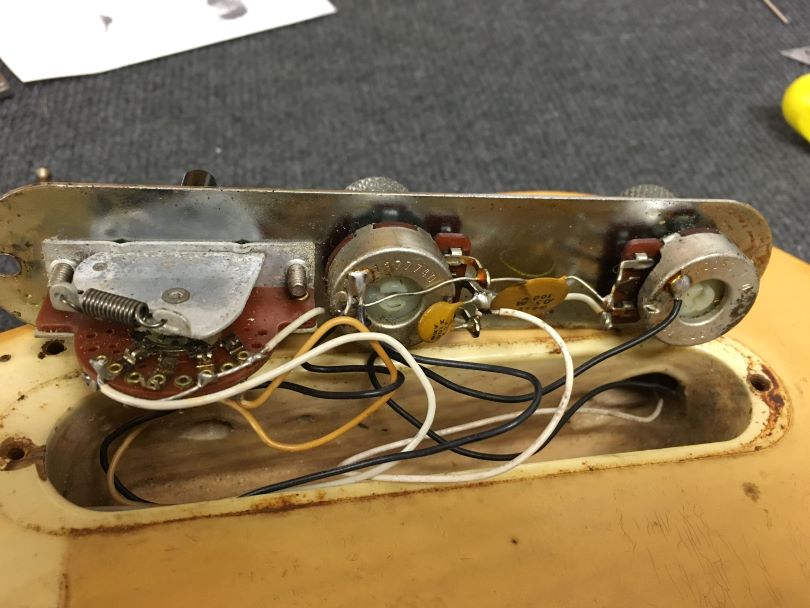
Fender in corporate clutches
But it's important to remember one vital fact. In the Leo Fender era, many enthusiasts were working in the company who were musicians themselves and contributed their expertise to the development of guitars. At that time, Fender wanted musicians to be happy with his instruments so the instruments were adapted to their needs. The employees were thus able to give quick feedback when they rehearsed and performed on the guitars and then consulted everything at work.
This logically made the employees feel part of the whole process. But this was only feasible when Fender was producing fewer instruments and didn't have as many employees.
CBS was a corporation. And that meant changes in company thinking and behaviour. From an employee's point of view, it meant primarily the depersonalization of production. Gradually, corporate elements began to emerge, especially the pursuit of career advancement, the unclear structure of responsibility in the corporate hierarchy and the handing over of responsibility to someone else. Senior managers had nothing to do with guitars anymore, they were mostly concerned with career progression within CBS. So if they achieved interesting results at Fender, they could move up in the corporation to a better position or a completely different industry.
Many dedicated employees and enthusiasts left Fender because of this. New people with no experience of guitars and no knowledge of the previous era came in. In short, the corporation and mass production took off. Everything old was forgotten.
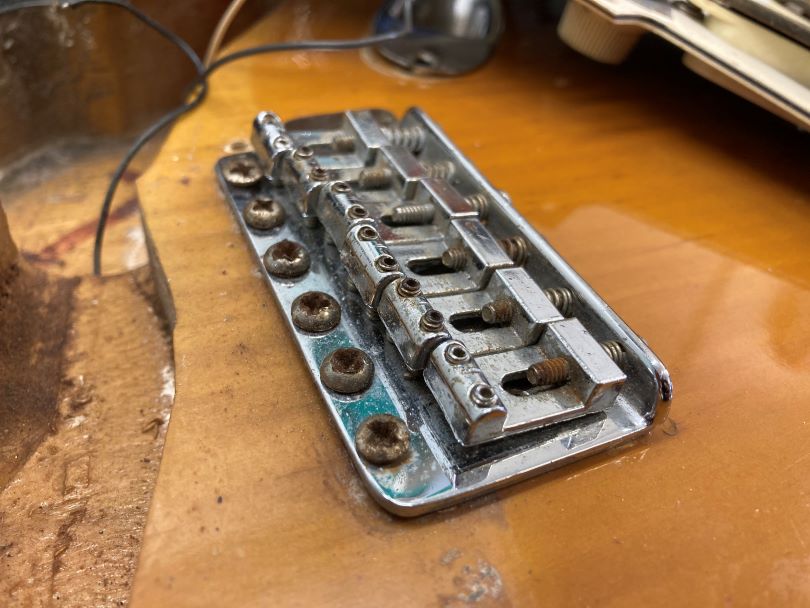
Saving time and costs
CBS intended to make more products so that more musicians could play Fenders. This entailed focusing primarily on the business side of things. When you want to produce more, you have to cut costs and save time. All of this has slowly started to be implemented at Fender. Cheaper and more readily available materials were used, more time-efficient processes were adopted to produce guitar parts, and the quality inspection was adjusted to the declining quality of the products.
Quality of workmanship
When you hold a golden-era Fender guitar and put a CBS-era model next to it, say from the 1970s, you'll notice the differences at a first glance. Over time, the attention to detail that used to distinguish Fenders diminished.
The fretboard fretting is not as perfect as it used to be. Necks can get more deformed. The lacquer layer is much thicker in some places which creates a not very flattering impression. You can easily check the lacquer layer yourself by looking at the maple lacquered fingerboard. Towards the end of the fingerboard, the frets are only slightly spaced apart. The lacquer layer between the frets is so thick that it follows the curve, creating a sort of hole between the frets. It doesn't add much to the sound quality or the comfort of playing.
The treatment and soldering of the electronics are also different. Typically, you can notice large lumps of tin on the potentiometers and wires routed in an untidy manner. The material of the wires was changed too.
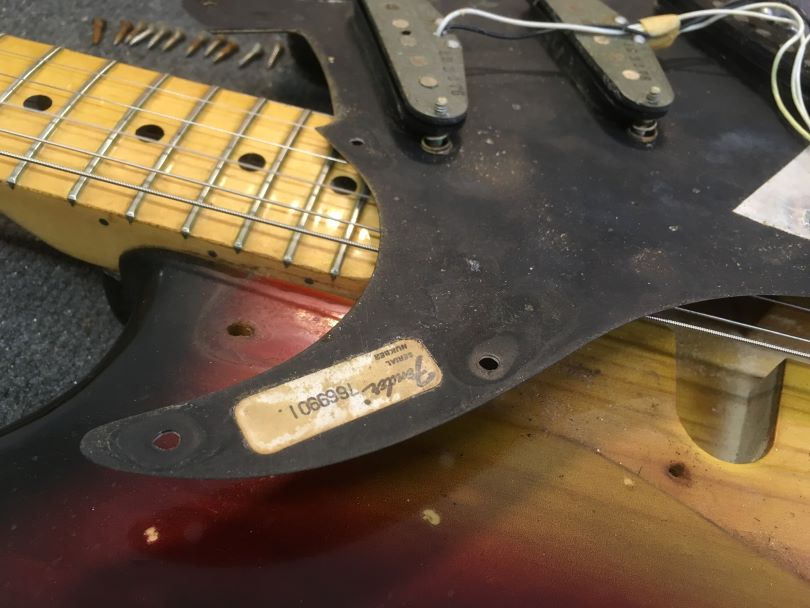
Materials
Over the years of the CBS era, many things changed, such as the materials on all the guitars. The position markers on the fingerboard were changed from so-called clay to pearl, which looks a bit cheaper.
Heavier woods were used so many of the 1970s models actually weigh a lot. The weight of the guitar affects how you feel when playing standing up and possibly how long it takes you to start having back problems.
The material and design of the bridge and saddle stones also changed. It is evident now that the newer material was not a very good choice. Saddle stones often have deep grooves cut into them caused by the pressure of the strings. This results in the strings cracking against the sharp groove or poor quality transmission of their vibrations resulting in unpleasant resonance. Such stones must be sanded or replaced.
The pickguard material was different too. They used to be made of celluloid but were gradually replaced by materials called ABS or vinyl. Over time, celluloid pickguards gained a greenish tint, which is attractive in terms of design. Newer materials did not have this feature.
The laquer changed dramatically. The high-quality nitro lacquer was gradually replaced by polyurethane. After 1968, nitro lacquer was no longer used. The difference is in the speed of drying. Nitro lacquer takes time, polyurethane dries faster. It also has more gloss and it is harder. However, there is a significantly thicker layer of polyurethane which worsens both the sound and appearance of the guitars. Nitro lacquers fade with UV exposure so the original colour can turn into quite a different, original shade over time. This adds a lot to the overall look of the guitar and collectors go for it.
This was noticed later in the Custom Shop—they started producing guitars with a lacquer that made them look like they were several decades old. As a result, you can choose from models that either have the lacquer scratched (relic finish) or, for example, have the lacquer cracked but intact (NOS finish—new old stock). The guitar looks like the owner bought it in the 1950s, put it in a case for a few decades and didn't play it. Thanks to the Custom Shop, you can get a guitar that not only replicates the golden era in terms of workmanship and quality but also its paintwork is modified to look exactly like the old guitars.
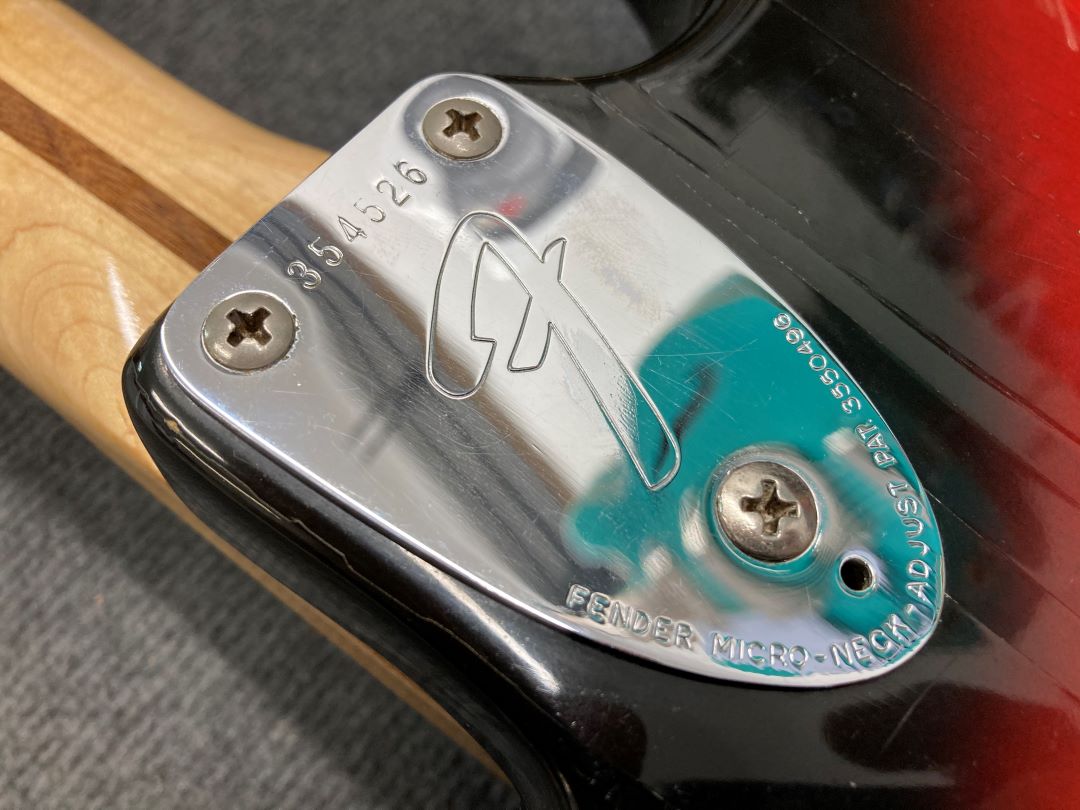
Change in construction
In the CBS era, there were several major changes in the very design of the guitars. I think the most significant is the way the neck is attached to the body of the guitar. The original four-screw attachment was replaced by a new three-screw attachment. This reduces the quality and stability of the given joint between the neck and the body. This change came about in 1971. Some models were fortunately spared it. In the early 1980s, all models got the good old four-screw attachment back.
It did bring one positive innovation. The new neck/body joint included a system that allowed the angle of the neck to the body to be adjusted with an Allen key. Thus, it was no longer necessary to remove the neck from the body and to line the neck pocket with veneer to change the neck angle.
Another design and money-saving change affected the neck bracing. This also happened in the early seventies. The adjustable end of the truss rod was now at the headstock and resembled a bullet in shape. This was a more practical solution that made it easier and faster to adjust the neck deflection. Simply insert an Allen key into the bullet and adjust the neck as needed. Previously, it was necessary to remove the entire neck from the body.
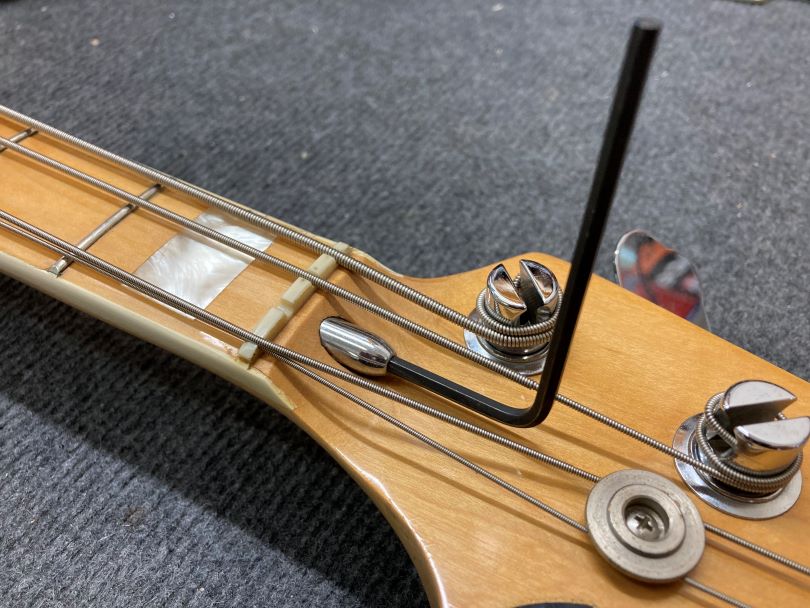
Change in design
At first glance, you may notice the change in the shape of the headstock and the Fender logo on it. The headstocks became larger and wider, especially on the Stratocaster.
During the Leo Fender era, the logo was narrow and became known as the Spaghetti logo. Between 1964 and 1966, the shape of the logo changed and became known as the Transition logo because it marked the era of transition from Leo Fender to CBS. Later, after the full transition to CBS, the logo became more distinctive.
A relatively positive innovation was the addition of a second string guide to the headstock. It especially helped the G string, which otherwise, due to the shape and angle of the headstock, didn't have much downforce on the zero fret and tended to resonate. The second string guide prevented this undesirable effect.
The shape and curves of the body changed significantly. From the beginning, the Stratocaster's modern shape and its curves made playing very comfortable as it conformed to the shape of the human body. Over time, however, the curvature diminished and the design became less elegant. Combined with the heavy wood, thick lacquer layer and less rounded body edges, the playing comfort somewhat decreased as well.
Some players are also bothered by the thick layer of lacquer on the fingerboard and the back of the neck. If the playing hand sweats on the neck, the material of the lacquer will cause resistance and the hand will not slide on the neck as easily. This slows down the playing. This is also one of the reasons why many players prefer the earlier nitro lacquer, which is more comfortable in this respect. However, this is a highly subjective matter; many guitarists have no problem with it.
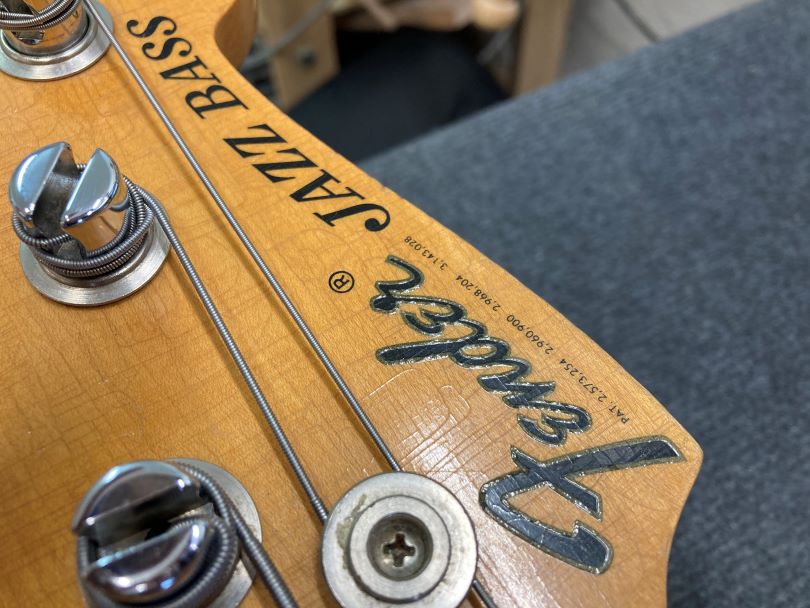
Five-position pickup switch
One of the few positive innovations was the five-position pickup switch that replaced the three-position switch on the Stratocaster. This provided players with a new sound— two pickups could be combined and the resulting sound made everything more interesting. This switch is commonly used to this day and is also used added to the reissue or vintage models that replicate the 50s and 60s.
The end of the CBS era
As the CBS era drew to its end, the quality of all the guitars was deteriorating significantly and players' interest in the Fender brand gradually waned. Therefore, several years before the sale, CBS was already wondering how to get rid of Fender. Even before that, some people from Yamaha (Dan Smith and Co.) came to Fender to analyse the state of production and product quality and suggest changes.
I recommend reading an interview with Dan Smith who describes the details about this period quite nicely. From his words, you can imagine what was going on with the quality of the guitars. For example, he mentions the very poor quality of the final inspection, which was far from professional. In the end, the analysis concluded that the production system had to be completely redesigned in order to start producing quality guitars again. Basically, production had to stop for a while so that all the employees could learn what they needed to know. Ironically, Fender had to relearn how to make guitars the way it did 20 years ago under Leo Fender. Fortunately, Dan and his colleagues succeeded and the Fender brand started to mean something again.
In 1984, Fender was purchased from CBS by a group of investors and former Fender employees. Since then, everything has changed—there was a new vision, new models like the American Standard, the Custom Shop department, Japanese production and so on.
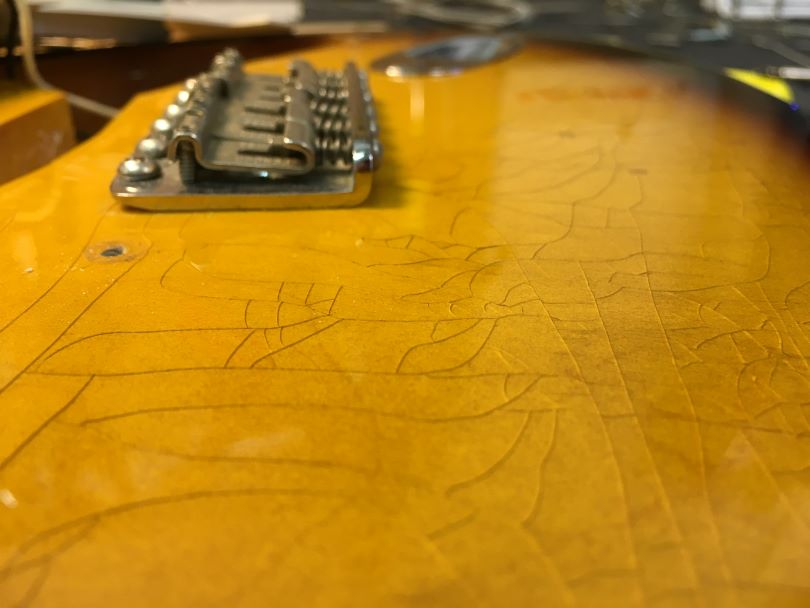
To conclude on the CBS era
The CBS era is generally considered a time when mass production took place and the quality of the instruments was drastically reduced. On the other hand, these guitars are much more affordable than other models from the 50s and 60s.
So if you want to own a piece of Fender history, the CBS-era guitars are worth considering. Compared to other brands from this period, they still stand the test. But if you compare them to different eras of Fender's development, they're somewhere at the bottom.
However, I believe the whole CBS era was very useful because the new owners were later able to come up with a new vision based on this experience, which made Fender a truly global brand.
If you have found an error or typo in the article, please let us know by e-mail info@insounder.org.


